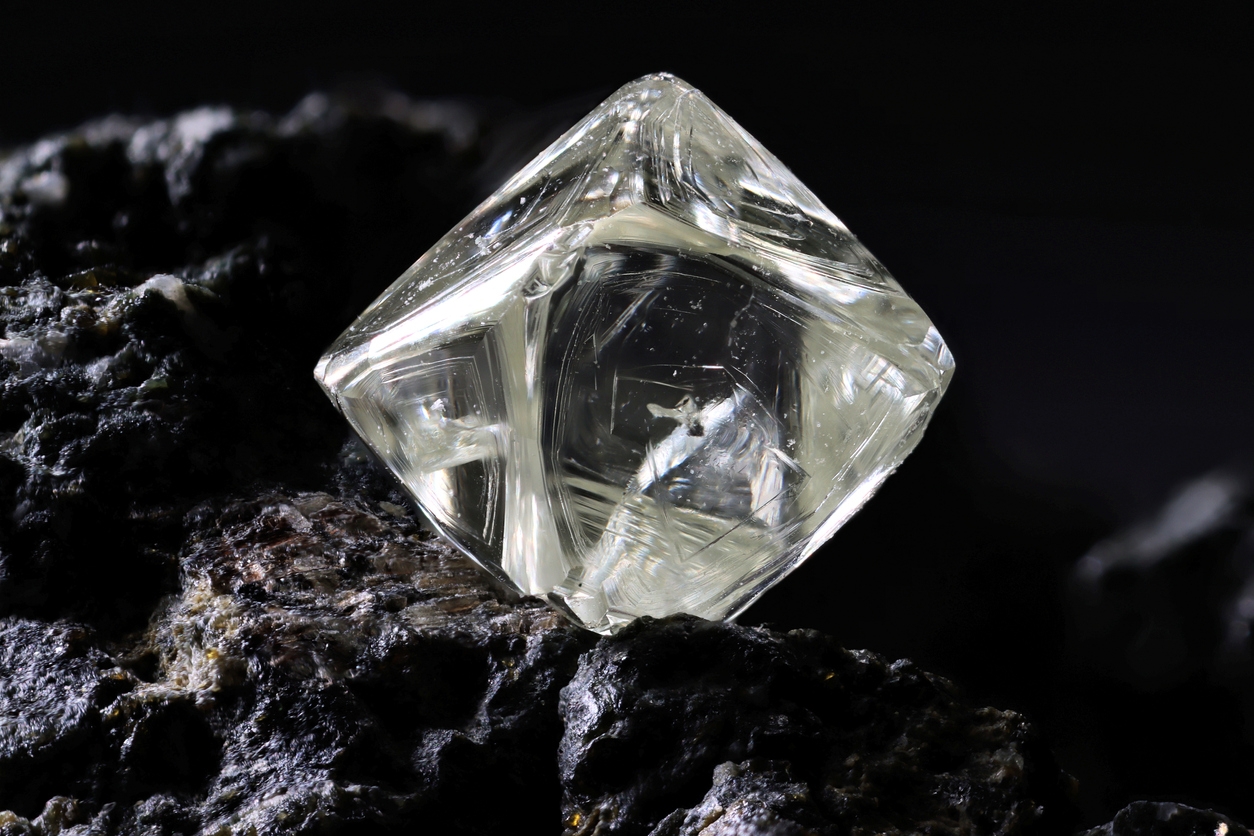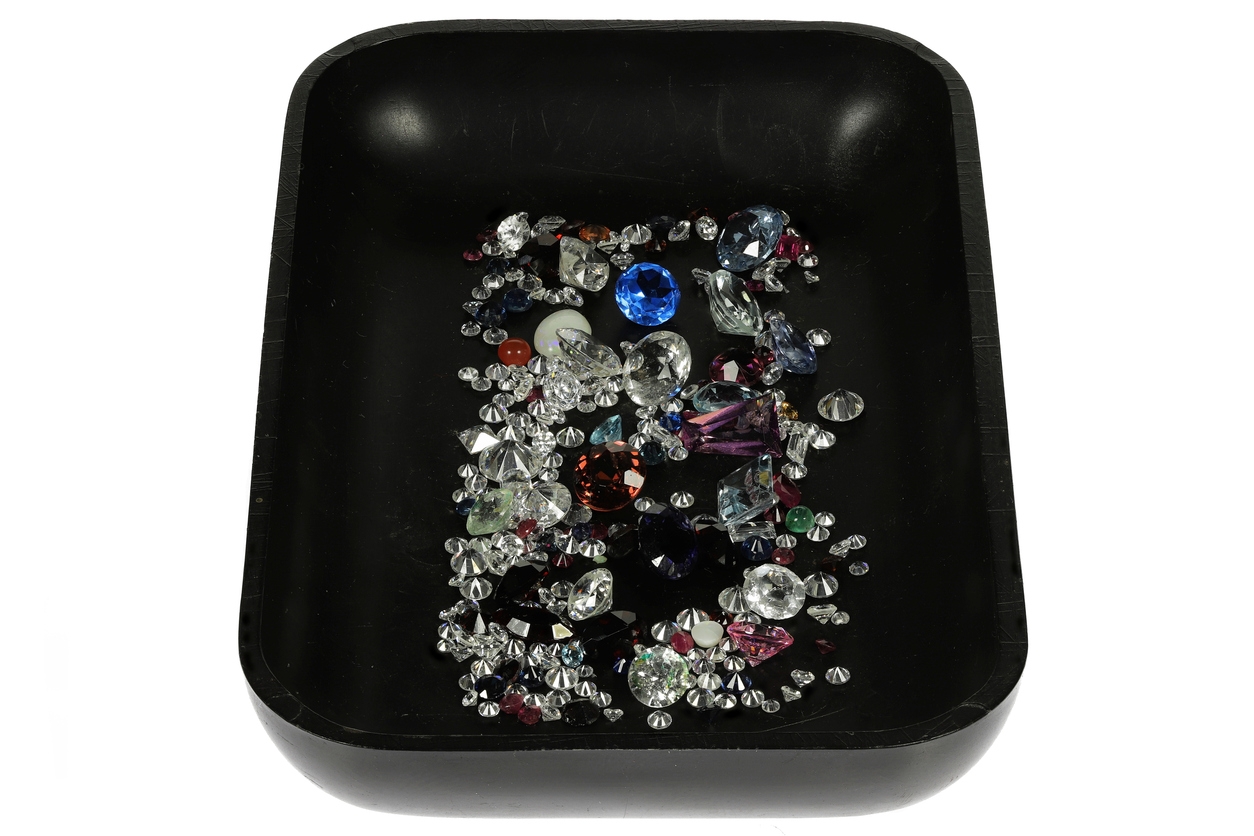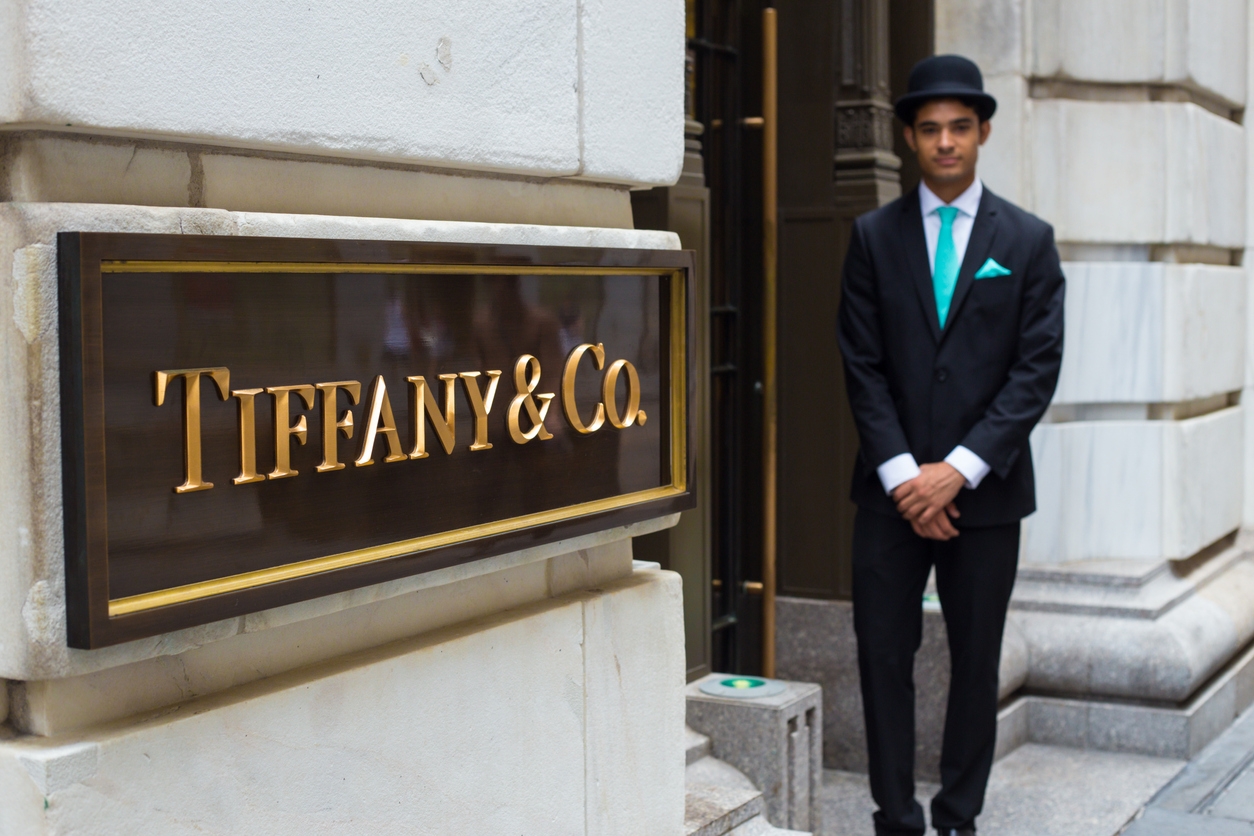The pages of history have witnessed their fair share of captivating stories, but few are as intriguing as the Great Diamond Hoax. It was a meticulously designed deceit, one in which individuals sought to perpetrate a remarkable ruse involving valuable diamonds. This audacious scheme revolved around the false claim of unearthing immense diamond wealth in the American West. It unfolded with a finesse that mesmerized an entire nation, leaving an indelible mark on the annals of deception.
This episode played out against the backdrop of the mid-19th century, leaving behind an indelible mark. Set in the context of a burgeoning diamond market and a nation grappling with post-Gold Rush aspirations, the Great Diamond Hoax serves as a testament to the lengths individuals would go to satisfy their ambitions and greed. The historic event, etched in time, encapsulates the essence of human ingenuity, audacity, and deception.
The Perpetrators
To unravel the intricacies of the Great Diamond Hoax, it is essential to delve into the lives of those responsible for orchestrating this grand deception. The main architects behind this audacious scheme were Philip Arnold and John Slack, an unlikely duo with distinct roles in the unfolding drama. [1]
| Name | Role |
| Philip Arnold | The mastermind of the Great Diamond Hoax. |
| John Slack | The mining expert who supported Arnold’s claims. |
Background of Philip Arnold
Philip Arnold, a former Kentucky grifter and speculative trader, had experienced the highs and lows of fortune. As a man acquainted with both prosperity and penury, he harbored a deep-seated desire for financial ascendancy. This desire would ultimately drive him to mastermind a scheme that would captivate the nation. Notably, he had worked at the Diamond Drill Company, where he acquired the knowledge of diamonds and geological processes, laying the groundwork for his role in this audacious plot.
John Slack, the Mining Expert
In contrast, John Slack was an adept mining engineer, an individual skilled in the art of extracting precious resources from the earth. His expertise was to serve as the pivotal instrument in lending credibility to the grand illusion. With a knowledge of geology and mining, Slack played an indispensable role in validating the existence of a diamond-rich field.
These two individuals, seemingly incongruent in their backgrounds, came together with a common purpose — to exploit the allure of diamonds and engineer a grand deceit. Their collaboration marked the inception of a hoax that would intrigue and beguile the masses.
The Bait and the Hook
The crux of the Great Diamond Hoax lay in the strategic execution of an elaborate ruse that aimed to astound the world with the apparent discovery of a bountiful diamond field. This section delves into the events that transpired, revealing the intricate steps taken to set the stage for this audacious deception.
Discovery of the “Diamond Field”
In 1871, the year that marked the inception of this daring ruse, Philip Arnold and John Slack embarked on a journey into the heart of the American West. In the remote and rugged terrain, they purportedly marked a fake diamond field.
This location was chosen with calculated precision, as its isolation and limited accessibility added an air of mystique and authenticity to the audacious hoax. The duo’s claim of having stumbled upon this diamond-rich land was a masterstroke, enhancing the intrigue of their endeavor.
The Unearthing of Diamonds
Philip Arnold and John Slack initiated the deception in the office of George D. Robert’s in late 1879. Roberts was a notable financier and businessman, whose reputation suggested a willingness to seize swift opportunities. Arnold and Slack arrived, carrying a leather bag holding something of great value. Under the guise of urgency, they confessed that the late hour had thwarted their attempts to deposit this valuable item in the Bank of California. They sought a secure repository for their treasure, but their reluctance to divulge its origin only heightened curiosity.
As Roberts pressed them, the contents of the bag were unveiled—rough diamonds, a substantial quantity, purportedly sourced from a remarkable diamond field concealed somewhere in the vast expanses of northern Colorado. The location of this diamond field remained shrouded in secrecy, setting the stage for an enticing and enigmatic narrative.
Enlisting Investors
Central to the hoax’s success was the recruitment of enthusiastic investors who believed they were on the brink of securing untold riches. [2]
| Name | Role |
| George D. Roberts | A prominent businessman who was initially lured into the scheme. |
| William C. Ralston | The Bank of California President and a legendary financier who built hotels and mills and invested in almost everything. |
| Asbury Harpending | A financer and participant in the hoax. Friend of William C. Ralston. |
| William Lent and Gen. | The San Francisco mining entrepreneurs who became investors. |
| Charles Lewis Tiffany | The famous jeweler whose opinion was sought to authenticate the diamonds. |
| Clarence King | The geologist who played a pivotal role in exposing the hoax. |
While Roberts made a promise of absolute secrecy, he soon betrayed it by confiding in two additional individuals—William C. Ralston, the visionary behind the Bank of California, and Asbury Harpending, an adventurous spirit and former Confederate enthusiast.
In subsequent meetings, Arnold and Slack divulged that they had revisited their concealed diamond field and retrieved an astonishing 60 pounds of diamonds and rubies, valued at over half a million dollars. Their tale of glittering riches continued to captivate. Eagerly, the moguls recruited two more influential mining entrepreneurs, Gen. George S. Dodge, a former Union Army officer, and William Lent, a prominent investor in the Comstock Lode, drawing them into the fold.
The Spectacle
The bait was set as the San Francisco investors, with a mixture of excitement and intrigue, agreed to an investment of $50,000 in cash. In return, Arnold and Slack pledged to return to the supposed diamond field and unearth even more stones, projected to be worth millions.
However, Arnold and Slack, instead of journeying to a remote gemstone field, embarked on a different voyage. Their destination was London, where, adopting false identities, they acquired approximately $20,000 worth of rough, uncut diamonds and rubies from a London-based gem merchant. Armed with these authentic but relatively low-grade gemstones, they returned to San Francisco, triumphantly presenting them to Roberts, Ralston, Harpending, Dodge, and Lent as the latest haul from their enigmatic gemstone source.
The spread of thousands of these genuine, though modest, gemstones on Harpending’s billiard table was a dazzling spectacle that would usher in a chapter of unprecedented intrigue and deception.
Tiffany’s Appraisal and Public Display
The group made a significant decision to have 10 percent of this batch undergo inspection and appraisal in New York. It was conducted by the esteemed Charles Lewis Tiffany of Tiffany & Co., the renowned jewelry store still operating in Manhattan. The gathering for this momentous appraisal included Maj. Gen. George McClellan, a prominent Civil War figure and former presidential candidate, Congressman Benjamin Butler of Massachusetts, Horace Greeley, the influential editor of the New York Tribune, and several notable bankers.
Tiffany’s expert eye confirmed the authenticity of the gems, valuing them at approximately $150,000. This validation, as sweet as sugar, catapulted the stones’ collective worth to a staggering $1.5 million, further fueling the fervor among the partners. [3]
The excited investors proceeded to establish the San Francisco and New York Mining and Commercial Company. To stimulate interest and promote the sale of shares in their ambitious venture, they showcased trays of these remarkable gemstones in the display window of jeweler William Willis.
At the Field
As the investors found themselves increasingly entranced by the unfolding drama, they decided to impose a crucial final stipulation. They insisted not only on being guided to the site but also on selecting an independent authority to accompany them. Their choice fell upon Henry Janin, a highly regarded mining engineer. However, Arnold and Slack, the cunning orchestrators of the scheme, agreed to this request with one curious condition – the inspection party would be blindfolded for the ultimate leg of the journey.
Within minutes of arrival, a cry of astonishment erupted from Rubery as he held up a gleaming discovery – a diamond. It was an unmistakable affirmation of the treasure’s existence. Henry Janin, overcome with enthusiasm, confirmed the authenticity of the gem field, reporting its genuineness to be beyond doubt. This revelation sent shockwaves of excitement not only across the nation but also far beyond its borders, capturing public’s fascination. The elaborate exhibitions and media exposure turned this hoax into a captivating narrative that ensnared the collective imagination of a nation steeped in dreams of fortune.
The Unraveling
The Great Diamond Hoax, like the Antwerp Diamond Heist, was a sophisticatedly planned con. As the grand spectacle continued, doubts and suspicions began to cast shadows on the authenticity of the diamond field. The unraveling of the deception was marked by the emergence of key figures, most notably Clarence King, whose involvement would contribute significantly to exposing the scheme.
Doubts and Suspicions Arise
Clarence King, a distinguished geologist and a pivotal figure in the United States Geological Survey, played a crucial role in casting doubt upon the authenticity of the diamond field. [4] His geological expertise allowed him to scrutinize the purported diamond-rich site. King’s skepticism and subsequent investigations unveiled inconsistencies and anomalies that challenged the very foundation of the hoax.
| King’s Role | Actions |
| Geological Expertise | Distinguished geologist and expert in mineralogy, possessing the necessary skills to assess the authenticity of the diamond field claims. |
| On-Site Investigation | Personal visit to the purported diamond field, allowing a firsthand examination of geological characteristics. |
| Critical Observation | Noted numerous inconsistencies and anomalies in the diamond field’s geological features, raising suspicions about the diamonds’ natural origins. |
| Exposing the Deception | Publicized his findings, effectively exposing the scheme and casting doubt on the authenticity of the diamonds. |
| Legal Action | Expert testimony played a crucial role in the legal proceedings against the perpetrators, contributing to their accountability. |
Investigation and Exposure
The burgeoning skepticism, amplified by King’s findings, prompted thorough investigations into the veracity of the claims. The once-unassailable façade began to crumble as the weight of evidence mounted. The exposure of the hoax sent shockwaves throughout the nation.
Fallout and Legal Consequences
Although Arnold and Slack faced legal charges in California for their deceptive scheme, the wheels of justice never turned fully against them. Arnold found himself entangled in lawsuits brought forth by investors who had been enticed by the allure of the “diamond field.” These legal disputes eventually led to out-of-court settlements. [5]
In the later chapters of their lives, Arnold transitioned into a career in banking in Elizabethtown, where a bitter rivalry resulted in his shooting in 1878. Following a challenging recovery from the gunshot wound, he succumbed to pneumonia six months later. On the other hand, Slack’s journey concluded in New Mexico in 1896, marking the end of their captivating and audacious deception.
| Events | Dates | Significance |
| Discovery of the “Diamond Field” | 1871 | Philip Arnold and John Slack claim to have found a diamond-rich area in the American West. |
| Unearthing of Diamonds | 1871 – 1872 | Diamonds are allegedly mined and presented as proof of the “diamond field.” |
| Recruitment of Investors | 1872 | Investors, including George D. Roberts, William C. Ralston, Asbury Harpending, and others, are lured into the scheme. |
| Public Diamond Exhibitions | 1872 – 1873 | Elaborate displays of diamonds captivate the public and the media. |
| Clarence King’s Investigation Begins | 1872 | Clarence King, a geologist, becomes skeptical and initiates an investigation. |
| Exposure of the Hoax | 1872 – 1873 | King’s findings, inconsistencies, and legal actions lead to the hoax’s unraveling. |
| Legal Consequences | 1873 | Legal actions against Arnold, Slack, and their associates ensue. |
Lessons Learned from the Diamond Hoax
This audacious episode of deception serves as a reminder of the enduring human proclivity for succumbing to the allure of quick riches. It underscores the importance of critical thinking, skepticism, and due diligence in the face of extraordinary claims. The legacy of this hoax endures as a cautionary tale about the perils of greed and the need for skepticism, even in the most captivating narratives.
Conclusion
In retrospect, the Great Diamond Hoax stands as a cautionary tale etched in history, illustrating the powerful interplay of human ambition and deception. As the scheme unraveled, it left a trail of lessons in its wake—lessons about discernment, skepticism, and the consequences of unchecked greed. This historical episode serves as a poignant reminder that, despite advancements and societal evolution, the allure of deception endures.




